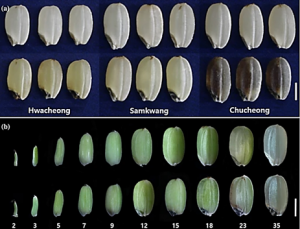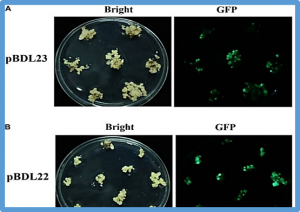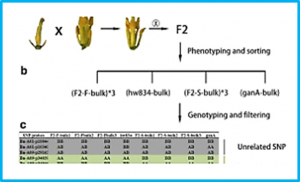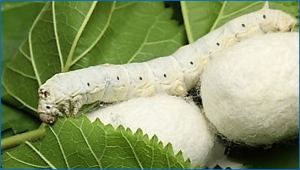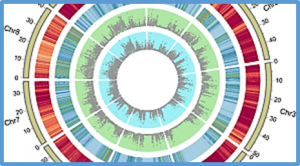Successful production of viable seeds is a major component of plant life cycles, and seed development is a complex, highly regulated process that affects characteristics such as seed viability and color. In this study, three yellowish-pericarp embryo lethal (yel) mutants, yel-hc, yel-sk, and yel-cc, were produced from three different japonica cultivars of rice (Oryza sativa L). Mutant seeds had yellowish pericarps and exhibited embryonic lethality, with significantly reduced grain size and weight.
The Knl1-Mis12-Ndc80 (KMN) network is an essential component of the kinetochore–microtubule attachment interface, which is required for genomic stability in eukaryotes. However, little is known about plant Knl1 proteins because of their complex evolutionary history. Here, we cloned the Knl1 homolog from maize (Zea mays) and confirmed it as a constitutive central kinetochore component.
Rice blast is one of the most serious diseases of rice and a major threat to rice production. Breeding disease-resistant rice is one of the most economical, safe, and effective measures for the control of rice blast. As a complement to traditional crop breeding, the transgenic method can avoid the time-consuming process of crosses and multi-generation selection. In this study, maize (Zea mays) Activator (Ac)/Dissociation (Ds) transposon vectors carrying green fluorescent protein (GFP) and red fluorescent protein (mCherry) genetic markers were used for generating marker-free transgenic rice.
Cytoplasmic male sterility (CMS) is a maternally inherited trait that can be controlled by restorer-of-fertility (Rf) genes present in the nucleus. The hau CMS was identified as a new form of CMS associated with the mitochondrial transcript orf288; however, a lack of a restorer gene has limited its utilization in Brassica crops. Here, the combination of Brassica 60 K array with bulk segregant analysis and map-based cloning was used to delimit the Rfh locus to an 82.2-kb region on chromosome A09
Soybean [Glycine max (L.) Merr.] provides more than half of the world’s oilseed production. To expand its germplasm resources useful for breeding increased yield and oil quality cultivars, it is necessary to resolve the diversity and evolutionary history of this crop. In this work, we resequenced 283 soybean accessions from China and obtained a large number of high-quality SNPs for investigation of the population genetics that underpin variation in seed weight and other agronomic traits
There are two types of fruit of spinach (Spinacia oleracea L.), spiny and spineless, which are visually distinguishable by the spines of fruit coat. In spinach breeding, the fruit characteristic is an important agronomic trait that have impacts on “seed” treatment and mechanized sowing. However, the gene(s) controlling the fruit spiny trait have not been characterized and the genetic mechanism of this trait remained unclear.
The circadian clock plays essential roles in diverse plant biological processes, such as flowering, phytohormone biosynthesis and abiotic stress responses. The manner in which circadian clock genes regulate drought stress responses in model plants has been well established, but comparatively little is known in crop species, such as soybean, a major global crop. This paper reports that the core clock components GmLHYs, the orthologues of CCA1/LHY in Arabidopsis,
Soybean seeds are an ideal host for the production of recombinant proteins because of their high content of proteins, long-term stability of seed proteins under ambient conditions, and easy establishment of efficient purification protocols. In this study, a polypeptide fusion strategy was applied to explore the capacity of elastin-like polypeptide (ELP) and γ-zein fusions in increasing the accumulation of the recombinant protein in soybean seeds
Chemical insecticides remain the main strategy to combat mosquito-borne diseases, but the growing threat of insecticide resistance prompts the urgent need to develop alternative, ecofriendly, and sustainable vector control tools. Entomopathogenic fungi can overcome insecticide resistance and represent promising biocontrol tools for the control of mosquitoes.
Adaptation is a robust way through which plants are able to overcome environmental constraints. The mechanisms of adaptation in heterogeneous natural environments are largely unknown. Deciphering the genomic basis of local adaptation will contribute to further improvement in domesticated plants. To this end, we describe a high-depth (19.4 ×) haplotype map of 3.02 million single nucleotide polymorphisms in foxtail millet (Setaria italica) from whole-genome resequencing of 312 accessions.


 Curently online :
Curently online :
 Total visitors :
Total visitors :
